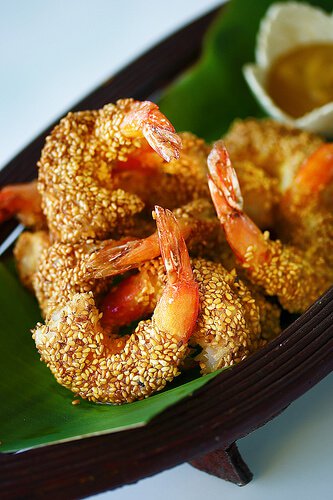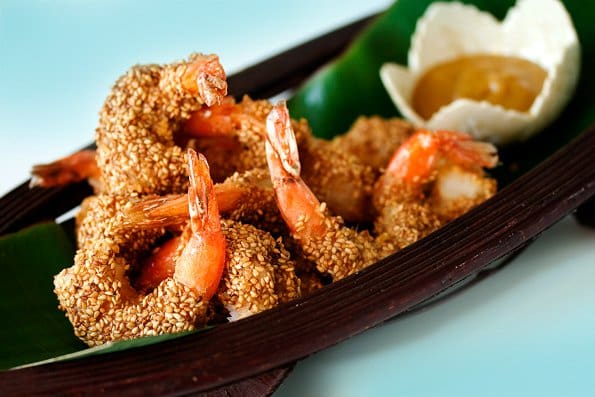
This recipe for Sesame Shrimp with Honey Mustard Sauce is from the legendary Cecilia Chang 江孫芸, best known for her Chinese restaurant in San Francisco, called the Mandarin Restaurant. Through her restaurant, she introduced America to authentic regional Mandarin-style, Chinese food.
Recipe reprinted with permission from: The Seventh Daughter: My Culinary Journey from Beijing to San Francisco by Cecilia Chiang Ten Speed Press (c) 2007
Cocktail parties were a regular occurrence at The Mandarin in Beverly Hills, and these shrimp, along with our Pork Ruble’s in Sweet-and-Sour Sauce, were perennial best sellers. I had one chef who did nothing by fry shrimp, sometimes for hours. In fact, guests loved the shrimp so much that we eventually put them on the menu.
One of the nice things about this recipe, other than the fact that the shrimp are incredibly delicious, is that you can easily prepare them almost entirely ahead of time and do the final frying at the last minute. The recipe can be doubled or tripled, which is a good thing since they seem to disappear rapidly. If you prefer, use Sweet and Sour Sauce instead of the dipping sauce recipe given here. -L.W.

Xiao Long Bao is one of the most famous Chinese ste
What you’ll learn: How to make a vegetarian versi
The Chinese culture is filled with food traditions
Ancient Chinese Stir Fry Secrets (at home) Restaura
New friend, Deb Puchalla, who is Editor in Chief of
Copyright © 2000-2018.New Asian Restaurant News All rights reserved.
FEEDBACK